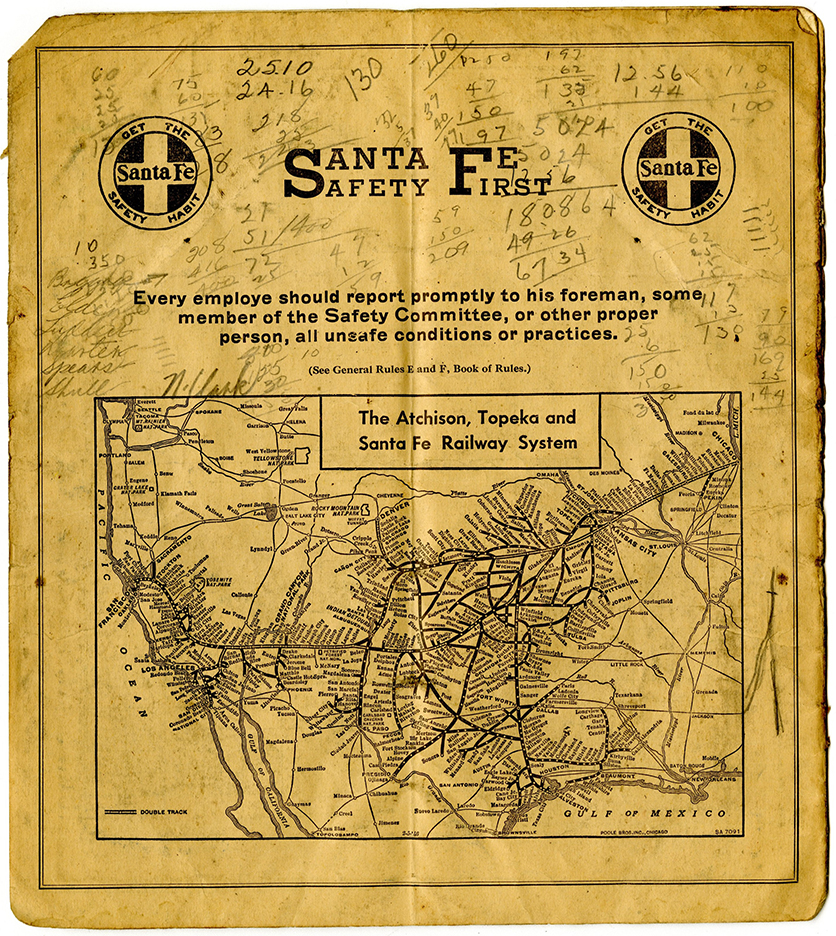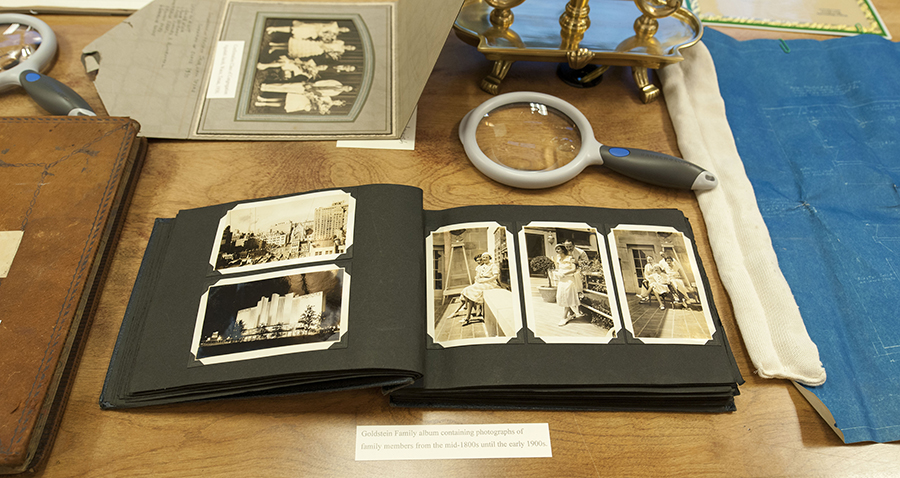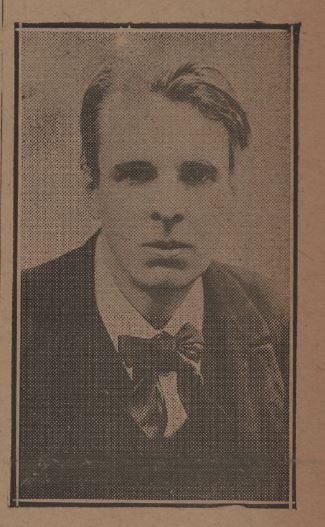 Are you hungry for dinner yet? Prepare to salivate, because we’ve got some delicious dishes to share with you! As we prepare for our Cooking in Texas event, we asked our panelists to share some of their favorite recipes with us, and boy, do they sound good! Today we’ll share a few entries, and we’ll post a couple more next week. If these tickle your taste buds, please join us at Bennett Auditorium on Thursday, February 12, at 3:30, to talk Texas food and cuisine—and then head to the Texas Collection reading room for a reception featuring regional cuisine prepared by culinary students at Texas State Technical College, more foodie discussion, and cookbook signings. The event is free and open to the public.
Are you hungry for dinner yet? Prepare to salivate, because we’ve got some delicious dishes to share with you! As we prepare for our Cooking in Texas event, we asked our panelists to share some of their favorite recipes with us, and boy, do they sound good! Today we’ll share a few entries, and we’ll post a couple more next week. If these tickle your taste buds, please join us at Bennett Auditorium on Thursday, February 12, at 3:30, to talk Texas food and cuisine—and then head to the Texas Collection reading room for a reception featuring regional cuisine prepared by culinary students at Texas State Technical College, more foodie discussion, and cookbook signings. The event is free and open to the public.
Cooking in Texas panelists include Lisa Fain, founder of the award-winning blog “Homesick Texan”; Marvin Bendele, Executive Director of Foodways Texas; Mary Margaret Pack, private chef, food historian and author; Beth White, cookbook collector and author of Sweets and Meats: Early Texas Cook Books: 1855-1936; and moderator Addie Broyles, blogger and food editor for the Austin American-Statesman. The panel will discuss the quality, bounty, preparation and uniqueness of Texas food and cuisine.
Can’t make the event? Follow the discussion on Twitter at #cookingintx.
~~~
 Lisa Fain is the James Beard Award-winning creator of the food blog Homesick Texan, and the author of The Homesick Texan Cookbook and The Homesick Texan’s Family Table. Her work has been featured in The New York Times, Texas Monthly, Southern Living, and Saveur, and she’s a founding member of Foodways Texas. A seventh-generation Texan, Lisa currently resides in New York City.
Lisa Fain is the James Beard Award-winning creator of the food blog Homesick Texan, and the author of The Homesick Texan Cookbook and The Homesick Texan’s Family Table. Her work has been featured in The New York Times, Texas Monthly, Southern Living, and Saveur, and she’s a founding member of Foodways Texas. A seventh-generation Texan, Lisa currently resides in New York City.
Grandma’s Chocolate Pie from Lisa’s The Homesick Texan Cookbook
There are pies, and then there is my grandma’s chocolate pie. It’s a luscious chocolate custard resting on a flaky, almost salty crust, topped with a springy meringue. Whether times are good or times are bad, it’s always welcome and appropriate. It is my favorite dessert.
Pie Ingredients
- 1 unbaked pie crust in a pie pan
- 3/4 cup granulated sugar
- 5 tbsp. all-purpose flour
- 1/4 tsp. kosher salt
- 4 tbsp. unsweetened cocoa or 1 1/2 squares of baking chocolate
- 2 egg yolks, beaten slightly
- 1 1/2 cups whole milk
- 1/2 tsp. vanilla extract
- 1 tbsp. unsalted butter
Meringue Ingredients
- 2 egg whites
- 1/8 tsp. kosher salt
- 4 tbsp. granulated sugar
- Preheat the oven to 350 degrees.
- Poke holes into the unbaked pie crust with a fork and bake it for 15 to 20 minutes or until it’s lightly browned. Some people prefer to weigh it down with pie weights or beans as it may bubble a bit.
- Meanwhile, mix together the sugar, flour, salt, cocoa, egg yolks, and milk with a whisk. Cook in a pot on medium heat while occasionally stirring until it bubbles and thickens, about 7-10 minutes. If it starts to become lumpy, just beat out the lumps. (It will not get any thicker in the oven so cook it in the pot until it’s your desired thickness.)
- Remove from the heat and stir in the vanilla and butter.
- To make the meringue, beat the egg whites with salt until they are smooth, light and fluffy; they should have soft peaks like whipped cream. This can take anywhere from 5 to 10 minutes. (If you don’t have a stand mixer, a strong arm with a whisk or an eggbeater can accomplish this task, too. Please note that by hand it will take much longer than 10 minutes.) Stir the sugar into the meringue.
- Pour the chocolate custard into the baked pie shell and top with the beaten egg whites. Bake it until the peaks on the meringue are lightly browned, about 10 to 15 minutes.
 Marvin Bendele is the Executive Director of Foodways Texas. He is a Ph.D. Candidate in American Studies at the University of Texas at Austin, where he teaches a class on American Foodways. He contributed to the 2009 book Republic of Barbecue, and has completed multiple oral histories for the Southern Foodways Alliance’s Southern Barbecue Trail & the Foodways Texas oral history archive at the Briscoe Center for American History. Bendele comes from an Alsatian-Texan family that settled in Castroville in 1848.
Marvin Bendele is the Executive Director of Foodways Texas. He is a Ph.D. Candidate in American Studies at the University of Texas at Austin, where he teaches a class on American Foodways. He contributed to the 2009 book Republic of Barbecue, and has completed multiple oral histories for the Southern Foodways Alliance’s Southern Barbecue Trail & the Foodways Texas oral history archive at the Briscoe Center for American History. Bendele comes from an Alsatian-Texan family that settled in Castroville in 1848.
Deviled Eggs (Provided by Marvin’s mother-in-law Margaret Anne Mitchell)
Ingredients
- 6 eggs, hard-boiled
- 1 tbsp. softened butter
- 2 tbsp. mayonnaise or more (to your liking)
- 1 tsp. chopped fresh chives or parsley (or both)
- 2 tsp. capers plus ½ tsp. caper juice
- Dash of dry mustard
- Salt and pepper to taste
Directions
Slice eggs, Scoop out egg yolks. Mash yolks with a fork and add remaining ingredients. Stir mixture together completely and put back into the egg whites. Garnish with paprika or small sprigs of parsley. Chill.
~
 Mary Margaret Pack is a fifth-generation Texan who grew up on the Gulf Coast eating shrimp, blue crabs, and rice and gravy. She’s a food writer/historian and private chef who divides her time between Austin and San Francisco. A former librarian and technical writer, she’s a graduate of Rice University, the University of Texas, and California Culinary Academy, and has been writing about food since 1998. A regular contributor to The Austin Chronicle and Edible Austin, she’s published in Gastronomica, The San Francisco Chronicle, Sugar & Rice, Oxford Encyclopedia of Food & Drink in America, Nation’s Restaurant News, Scribner’s Encyclopedia of Food and Culture, The Dictionary of Culinary Biography, and Southern Foodways Alliance’s Cornbread Nation 1. She’s presented on food and foodways to various museums and food history groups, as well as to IACP (International Association of Culinary Professionals), Les Dames d’Escoffier International, CIA-Napa, Southern Foodways Alliance, Foodways Texas, Texas Folklore Society, and the Historic New Orleans Collection.
Mary Margaret Pack is a fifth-generation Texan who grew up on the Gulf Coast eating shrimp, blue crabs, and rice and gravy. She’s a food writer/historian and private chef who divides her time between Austin and San Francisco. A former librarian and technical writer, she’s a graduate of Rice University, the University of Texas, and California Culinary Academy, and has been writing about food since 1998. A regular contributor to The Austin Chronicle and Edible Austin, she’s published in Gastronomica, The San Francisco Chronicle, Sugar & Rice, Oxford Encyclopedia of Food & Drink in America, Nation’s Restaurant News, Scribner’s Encyclopedia of Food and Culture, The Dictionary of Culinary Biography, and Southern Foodways Alliance’s Cornbread Nation 1. She’s presented on food and foodways to various museums and food history groups, as well as to IACP (International Association of Culinary Professionals), Les Dames d’Escoffier International, CIA-Napa, Southern Foodways Alliance, Foodways Texas, Texas Folklore Society, and the Historic New Orleans Collection.
Sky Terrace Shrimp and Avocado Salad
I grew up in Houston and, as I’m sure was the case for many little girls in the ’50s and ’60s, it was a huge treat to shop downtown with my mother at Sakowitz Department Store and have a grown-up, elegant lunch at the Sky Terrace. I often ordered the shrimp salad with avocado, and as I recall, so did my mother.
This dish was served at least since the 1960s at the Sky Terrace Restaurant in the Sakowitz Brothers Department Store in downtown Houston, Texas (1950-1985). The popular Sky Terrace never published a cookbook, but this recipe was printed in the Houston Chronicle, and many versions are available online. It’s a great example of a mid-20th-century dish for ladies who lunched, yet it remains fresh, timely, and delicious.
- 1 1/2 pounds shrimp, cooked, peeled, and deveined
- 3/4 cup chopped celery
- 1/2 cup mayonnaise
- Juice of 1/2 lemon
- Salt to taste
- 3 avocados
- 1 head of iceberg lettuce, shredded
Directions
- Lightly mix shrimp, celery, mayonnaise, lemon juice, and salt.
- Combine with remoulade sauce, cover, and chill.
- Halve avocados, remove seeds and peel and slice each half into four wedges.
- To serve, divide shredded lettuce among six plates.
- Fan four slices of avocado on each plate and top with generous portion of shrimp salad.
Remoulade Sauce
- Makes 1 ½ cups
- 1 hard-cooked egg, peeled and coarsely chopped
- 2 shallots or green onions, chopped
- 4 garlic cloves, finely chopped
- 1/4 cup cooked spinach, finely chopped and well drained
- 1 cup mayonnaise
- 1 tbsp. Worcestershire sauce
- 1 tbsp. Dijon or Creole-style mustard
- 1 tbsp. fresh lemon juice
- 1 tsp. anchovy paste
- Dash of liquid hot red pepper sauce, such as Tabasco
Directions
- In food processor, blend egg, shallots, garlic, spinach, mayonnaise, Worcestershire, mustard, lemon juice, anchovy paste, and pepper sauce.
- Can be made one day in advance.

![Fourteenth Annual Panhandle-Plains Dairy Show: Premium List. [Plainview, TX]: [publisher not identified], 1941. Print.](https://farm5.staticflickr.com/4354/36065783204_711d47982e_o.jpg)
![The Story of the S·M·S Ranch. [Stamford, TX?]: [Swenson Bros.?], [1919]. Print.](https://farm5.staticflickr.com/4378/36503321190_45891d11e8_o.jpg)
![San Antonio, Tex. New York: Rotograph Co., [1905]. Print.](https://farm5.staticflickr.com/4353/36065783214_53b724bea2_o.jpg)

![Sullivan, John H., Jr. "Gun-play" by the World's Fastest Revolver Shot "Texas Jack.” [United States]: [publisher not identified], [between 1932 and 1937]. Print.](https://farm5.staticflickr.com/4323/35483069393_446e44e273_o.jpg)
![West-Texas: Das "Land der Gelegenheiten.” [Dallas, Texas?]: [publisher not identified], [1906?]. Print.](https://farm5.staticflickr.com/4313/35483069453_4623250a2f_o.jpg)
![Texas Prohibition Songs. Waco, Texas: Published and for sale by B. H. Simpson, [between 1900 and 1935?]. Print.](https://farm5.staticflickr.com/4326/36155260131_fd4d95bb10_o.jpg)
























